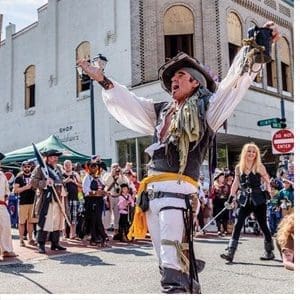
In June 1718, Blackbeard grounded his flagship, the Queen Anne’s Revenge — perhaps deliberately — near what is now Beaufort Inlet. Five months later, British Navy Lt. Robert Maynard tracked down Blackbeard and his crew at Ocracoke, killed the world’s most infamous buccaneer and then beheaded the body.
In the 300 years since, the fearsome pirate’s reputation has only grown. Legend has it his headless body swam three times around the ship before it sank. While such outlandish claims are impossible to prove or dispute, today there is a growing body of knowledge of life aboard Blackbeard’s ship, thanks to the discovery of the remains of the Queen Anne’s Revenge in 1996 and to more than two decades of painstaking work recovering and conserving artifacts from the wreck.
It’s only fitting that ground zero for that conservation effort is on the campus of East Carolina University, home of the Pirates. Inside the QAR Conservation Lab on ECU’s West Research Campus, the artifacts are X-rayed, cleaned, desalinated, dried and analyzed. Hundreds of thousands of individual artifacts have been recovered from the sea floor.
“East Carolina University does a lot of things very well, but of all the things we do well, there is one that we do better than anybody else anywhere, and that’s pirates and piracy,” says Dr. William Downs, dean of the Thomas Harriot College of Arts and Sciences. “It’s who we are and it’s what we do.”
Once they’re conserved, the most remarkable artifacts go on display for the public at the N.C. Maritime Museum in Beaufort and in a traveling exhibit. This year, to commemorate the 300th anniversary of the wreck of the Queen Anne’s Revenge and the death of Blackbeard, ECU’s Joyner Library exhibited a selection of artifacts.
Originally published Jan. 16, 2019.